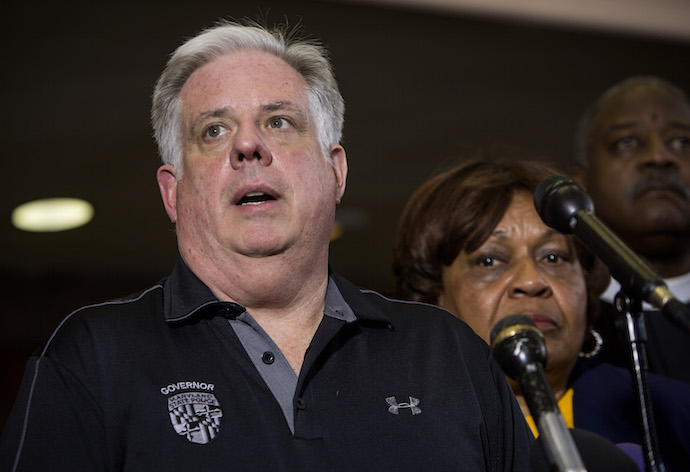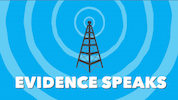The scene would have been a civics textbook come to life—had that textbook been produced by the state of Maryland’s summer tourism industry. Flanked by local politicians and business owners, Republican Governor Larry Hogan took to the Ocean City boardwalk on August 31 to announce a new executive order directing all public schools in the state to delay the start of classes until after Labor Day and end the school year by June 15. “School after Labor Day is now the law of the land in Maryland,” Hogan proudly declared. [i]

The governor argued that the move will boost late-season tourism, provide families additional vacation time, and benefit the environment by reducing the use of air-conditioning—all without harm to student achievement. He emphasized that the order makes no changes to the requirement in state law that public schools be open “for at least 180 actual school days and a minimum of 1,080 school hours” each year. And he cited a 2014 task force report commissioned by his Democratic predecessor, Martin O’Malley, that concluded “there was no quantifiable evidence that a post-Labor Day start is harmful to local schools systems.” [ii]
Yet Governor Hogan’s order flies in the face of ongoing efforts in Maryland and beyond to increase the amount of time students spend in school. Faced with mandatory federal and state holidays, contracted teacher professional development days, and the need to plan for weather-related cancellations, Maryland school districts will struggle to fit in the obligatory number of days without dramatically shortening winter and spring breaks. The lone district in the state to have opened after Labor Day this year was Worcester County, home to—you guessed it—Ocean City. Schools in Baltimore County opened two weeks earlier, on August 22, and are scheduled to remain open through June 15.
In short, the governor’s order will effectively convert the statutory minimum of 180 school days into a maximum. It will prevent Maryland school districts from using their resources to extend the school year, even if they believe that is the best way to advance student achievement. This is likely to have adverse consequences for students—especially those without access to high-quality educational resources outside of school.
The precise impact of instructional time on student outcomes is notoriously tricky to pin down, but the weight of the evidence (and common sense) indicates that it is an important contributor to academic success. The challenge comes in isolating the causal effect of a longer school day or year from the effects of other characteristics of schools and school systems that offer more instructional time. On one hand, school systems with the resources to increase instructional time may offer other services that benefit students. On the other, increased time-on-task is a common response to low levels of performance. Simply comparing schools with more and less instructional time is therefore apt to mislead. Fortunately, a growing number of researchers have devised clever ways to overcome this challenge.
Some of the best evidence comes from studies exploiting sudden changes in school start dates as a result of state policies similar to Hogan’s new order. For example, David Sims has shown that after a 2001 Wisconsin law required schools to open after Labor Day, districts forced to delay their start dates saw their students’ achievement on the state math test fall relative to districts that were unaffected by the law. [iii] Sims’s study does not speak directly to the net effect of the Wisconsin policy, since the districts it impacted may have found ways to provide students with additional days of instruction after the date of the state test. Yet it clearly indicates that the amount of time students had spent in school mattered for their performance on test day, perhaps helping to explain why districts had moved up their start dates in the years leading up to the policy change.
A second line of research has compared the performance of schools in years when they experienced frequent cancellations due to snowfall to the same schools’ performance in years with more mild winters. Consistent with the Wisconsin evidence, parallel studies in Colorado and Maryland found that weather-related differences in the number of days students had spent in school when they were tested had noticeable effects on their achievement. [iv] Summarizing this work in Education Next, Dave Marcotte and Benjamin Hansen concluded that “expanding instructional time is as effective as other commonly discussed educational interventions intended to boost learning” such as reducing class size and improving teacher quality. [v] Indeed, Matthew Chingos has shown that schools would do well to increase class sizes modestly in order to cover the costs of a longer year; the time-related benefits for student achievement would far outweigh any losses due to larger classes. [vi]
Beyond studies of start dates and cancellations, a broader range of evidence speaks to the likely value of extending the school year. Research on summer learning loss indicates that income-based gaps in student achievement tend to widen over the summer and narrow when school is in session, suggesting that low-income students have the most to gain from shortened summers. [vii] Studies based on the international data confirm that students perform better in a given subject when their school devotes more time to it. [viii] And a longer school day and year is a distinguishing feature of those charter schools that have the strongest positive effects on student achievement. [ix] While we do not know for sure that more time-on-task is the reason for these schools’ success, it seems unwise to erect barriers for school districts that want to follow in their footsteps.
In fact, Governor Hogan’s executive order will create a new regulatory headache for the handful of charter schools that operate in Maryland. Baltimore’s KIPP Ujima Academy opened its doors this year on August 22, and would have been open on August 11 were it not for a last-minute water main break in their facility. Yet the order contains no exception for charter schools. It does permit local school boards to apply to the Maryland State Board of Education for waivers on behalf of their district or individual schools, which the Board may grant for a single school year based on a “compelling justification.” Because Maryland charters are not their own local education agencies, however, this would seem to require that their host school district apply on their behalf.
Despite the celebratory mood at the governor’s boardwalk press event, his executive order drew criticism elsewhere. The state’s association of school boards rightly condemned it as an infringement of local control over school resources. The Attorney General questioned whether the governor had exceeded his constitutional authority. And Democratic legislators vowed to undo it in the next legislative session.
If their efforts prove unsuccessful, let’s hope that the members of the State Board, a majority of whom are Hogan appointees, nonetheless develop an exceedingly accommodating approach to handling school districts’ requests for flexibility. A stated desire to increase the amount of time students spend in school should be compelling enough justification for a waiver from this misguided policy.
—Martin R. West
Martin West is an associate professor of education at the Harvard Graduate School of Education, deputy director of Harvard’s Program on Education Policy and Governance, and editor-in-chief of Education Next.
This post originally appeared as part of Evidence Speaks, a weekly series of reports and notes by a standing panel of researchers under the editorship of Russ Whitehurst.
Notes:
[i] For coverage of the press event, see Hicks, J. (2016, August 31). Hogan orders Md. Schools to start after Labor Day beginning next year. Washington Post; Cox, E. & Bowie, L. (2016, August 31). Hogan orders Maryland public schools to start after Labor Day, sparking political fight. Baltimore Sun. The executive order is available at https://governor.maryland.gov/wp-content/uploads/2016/08/EO-01.01.2016.09.pdf.
[ii] Office of the Governor (2016, September 1). Math vs. reality on post-Labor Day school start date—Hogan’s office responds. Available from http://marylandreporter.com/2016/09/01/myth-vs-reality-on-post-labor-day-school-start-date-hogans-office-responds/.
[iii] Sims, D. P. (2006). Strategic responses to school accountability measures: It’s all in the timing. Economics of Education Review, 27(1), 58-68.
[iv] Marcotte, D. E. & Hemelt, S. W. (2008). Unscheduled school closings and student performance. Education Finance and Policy, 3(3), 316-338; Hansen, B. (2011). School year length and student performance: Quasi-experimental evidence. Social Science Research Network.
[v] Marcotte, D. E. & Hansen, B. Time for school? (2010). Education Next, 10, 1, 52-59. In related work conducted in Massachusetts, Harvard economist Josh Goodman finds no effects of school closures on student achievement but large negative effects of weather-induced absences on moderately snowy days when schools remained open. He concludes that Massachusetts schools may be well-equipped to handle disruptions caused by cancellations but not those caused by high absence rates. This would imply schools may be better off cancelling school when the weather is likely to increase absence rates—something Maryland schools may be less inclined to do when obligated to complete 180 days prior to June 15. See Goodman, J. (2014). Flaking out: Student absences and snow days and disruptions of instructional time. NBER Working Paper No. 20221. Cambridge, MA: National Bureau of Economic Research.
[vi] Chingos, M. M. (2013). Ending summer vacation is long overdue—Here’s how to pay for it. Brookings Chalkboard. Washington, DC: Brookings Institution.
[vii] See, for example, Downey, D. B., von Hippel, P. T., & Broh, B. A. (2004). Are schools the great equalizer? Cognitive inequality during the summer months and the school year. American Sociological Review, 69(5), 613-635.
[viii] Lavy, V. (2015). Do differences in schools’ instruction time explain international achievement gaps? Evidence from developed and developing countries. Economic Journal 125(588), F397-F424; Rivkin, S. G. & Schiman, J. C. (2013). Instruction time, classroom quality, and academic achievement. NBER Working Paper No. 19464. Cambridge, MA: National Bureau of Economic Research.
[ix] See, for example, Angrist, J. D., Pathak, P. A., & Waters, C. (2013). Explaining charter school effectiveness. American Economic Journal: Applied Economics, 5(4), 1-27; Dobbie, W. & Fryer Jr., R. G. (2013). Getting beneath the veil of effective schools: Evidence from New York City. American Economic Journal: Applied Economics, 5(4), 28-60.



